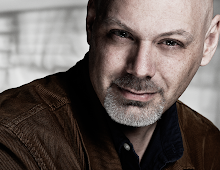
After taking a long, hard look at this Falcon, I realized that my painting/modeling game was way under par. I pride myself on a being a guy who takes some chances and works without the safety of a net... but the guts that went into creating that thing makes me look like a scared kitten. I decided not so much that I would copy what he did (because, honestly... like I could do that) but, instead, that I would show some courage and break some trends. The point wasn't so much to end up with beautiful, innovative models. The point was more to develop the guts necessary to make them. Fine distinction.
I approached this idea thinking that the Eldar vehicles look far, far too human. With their panels and air intakes and exhaust pipes and canopies, I couldn't help but think the basic Eldar Falcon could be rolling off the production line of the U.S. Air Force in 25 years. This is not a criticism, as I happen to think that Jes Godwin's ubiquitous Falcon is the most beautiful tank in the entire game. I simply want to stretch and try new things. I want to make my tanks look more eldritch. It occurred to me that, unlike humans, Eldar do not always need to see where they're going. Due to powerful psychic vision or the astral perception of Wraith constructs, the canopies with pilots therein seemed like they weren't always necessary. Add to this the BFG rules for Ghost Ships which are piloted by the souls of dead Eldar warriors and I got my vision in mind.
I decided to section off part of the hull in a long stripe (a stripe that has, like it or not, become somewhat common in my work) and remove all the details, thus making it a smooth, featureless expanse wedged between two standard sections of detail-laden Falcon. With the Forgeworld Mk II Falcon expansion installed, I did exactly this by filling the cracks with Brown Stuff and filing/sanding it down. This isn't a project that would work well with GW's Green Stuff; the Brown Stuff dries harder and responds better to sanding, especially fine grit.
The yellow needs evening out. There's always more to sand, more to file, more to repaint. Getting a simple, even yellow surface is much, much harder than you probably imagine. It's harder than I imagined at least.
This picture represents where I'm at with it now. As you can see, it's nowhere near done. Will I fill the yellow area with runes or art? Will I leave it blank? Will this be my Sistine Chapel? Or will this be my Hindenburg? I guess we'll find out.

No comments:
Post a Comment